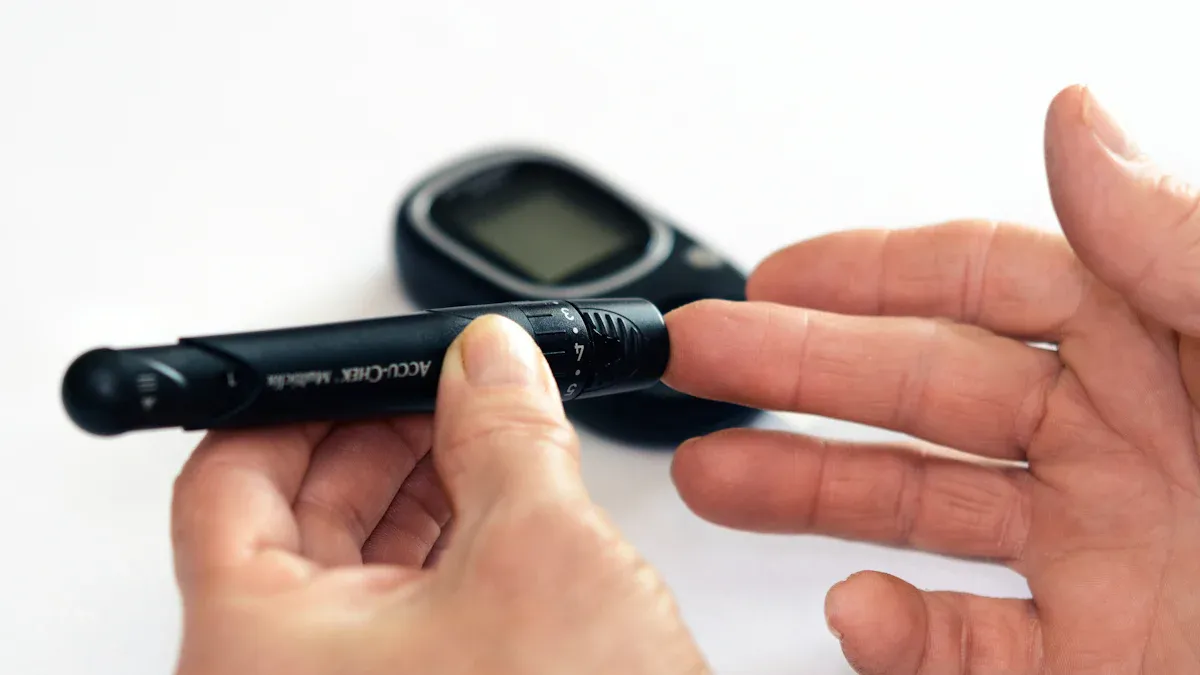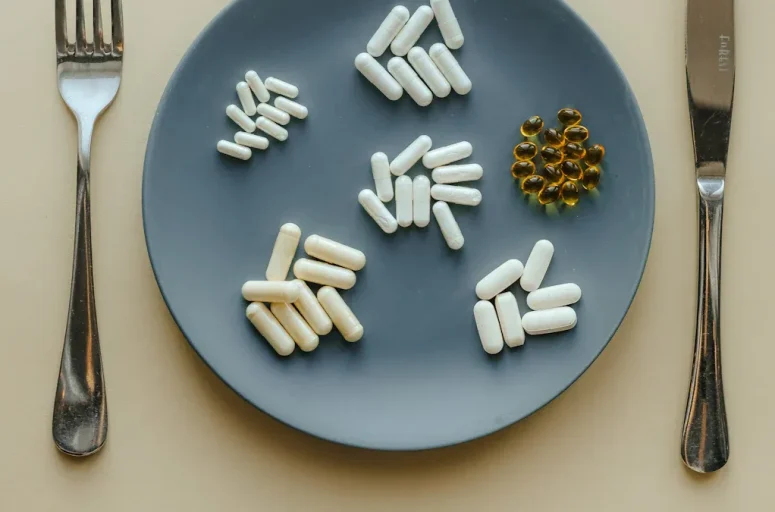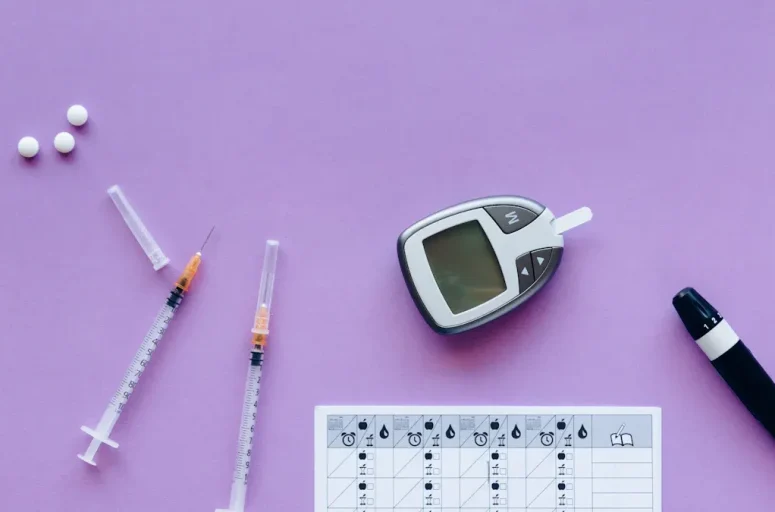
Managing Type 2 Diabetes can feel hard, but small changes help. The cinnamon benefits are noteworthy, as this common spice may assist in controlling blood sugar and fats. Studies show its benefits: a 2022 review found that 8 of 14 trials demonstrated lower fasting blood sugar and hemoglobin A1C levels. Another study indicated that consuming 1,000 milligrams of cinnamon daily for 12 weeks improved sugar levels. These results suggest that incorporating cinnamon into your diet may support diabetes care.
Key Takeaways
Cinnamon can help lower blood sugar and improve how insulin works. This makes it helpful for Type 2 Diabetes.
Taking 1 to 6 grams of cinnamon daily can improve fasting blood sugar and HbA1c levels.
Cinnamon slows how sugar is absorbed from food. This helps stop big blood sugar spikes after eating.
Cinnamon has antioxidants that protect cells and help control blood sugar. This supports better health overall.
Cinnamon may lower bad cholesterol (LDL). This reduces heart disease risk, which is important for people with diabetes.
Ceylon cinnamon is safer for daily use because it has less coumarin than Cassia cinnamon.
Adding cinnamon to food is simple. Try it in oatmeal, smoothies, or roasted veggies for flavor and health benefits.
Always talk to your doctor before changing your diabetes care plan, including using cinnamon.
Cinnamon Benefits for Blood Sugar Control
Helping Insulin Work Better
Cinnamon helps your body use insulin more effectively. Insulin moves sugar from your blood into cells for energy. If your body resists insulin, sugar levels rise, causing Type 2 Diabetes. Cinnamon can make your body respond better to insulin, helping control sugar.
For example, one study showed that taking cassia cinnamon powder (1, 3, or 6 grams daily) improved blood sugar in people with Type 2 Diabetes. Another study found that cinnamon extract (120 or 360 milligrams) lowered HbA1c, which measures long-term sugar control. These studies show cinnamon helps insulin work better.
Study Type | What Was Used | Result | Findings |
|---|---|---|---|
Small studies | Single doses of cinnamon | Insulin sensitivity | Improved insulin use and lower sugar after meals |
Clinical trial | Cassia cinnamon powder | Blood sugar control | |
Controlled trial | Cinnamon extract | HbA1c levels | Lower HbA1c and triglycerides |
Slowing Sugar Absorption
Cinnamon slows how fast your body absorbs sugar from food. This keeps sugar from spiking in your blood after eating. It works by blocking enzymes that break down carbs into sugar.
By slowing sugar absorption, cinnamon helps keep blood sugar steady all day. This is useful for stopping sugar spikes after meals, common in Type 2 Diabetes. Adding cinnamon to food or snacks can help control sugar better.
Cinnamon slows sugar entering your blood after eating.
It blocks enzymes that turn carbs into sugar.
Fighting Sugar with Antioxidants
Cinnamon has antioxidants that protect your cells from harm. These antioxidants also help lower blood sugar. Research shows cinnamon’s antioxidants improve sugar levels and how your body uses sugar.
For example, a 2018 study found that eating 6 grams of cinnamon daily cut fasting blood sugar by 5.92%. Another study in China showed a 2-gram dose reduced fasting sugar by 1.01 mmol/L. These results prove cinnamon’s antioxidants help manage blood sugar.
Study | Cinnamon Amount | Fasting Sugar Drop | p-value |
|---|---|---|---|
2018 Study | 6g/day | 0.035 | |
China Study | 2g/day | 1.01 mmol/L lower | 0.002 |
Other Study | 1g/day | From 11.6 to 8.7 mmol/L | N/A |
Cinnamon helps in three ways: improving insulin use, slowing sugar absorption, and using antioxidants. Adding cinnamon to your diet can help manage Type 2 Diabetes better.
Cinnamon Benefits for Lipid Profiles
Lowering LDL and Increasing HDL Cholesterol
Cinnamon can help improve cholesterol levels, which is important for diabetes care. It may lower LDL, or “bad cholesterol,” while having little effect on HDL, the “good cholesterol.” For example, a study showed cinnamon reduced LDL by 7-27% in people with Type 2 Diabetes. Lowering LDL can reduce the risk of heart disease, a common problem with diabetes.
Study | Sample Size | Duration | LDL-C Change | HDL-C Change | Significance |
|---|---|---|---|---|---|
Multicenter trial | 150 | 12 weeks | Reduction (not significant) | N/A | N/A |
Phase I trial (Ranasinghe et al.) | 28 | 12 weeks | Significant reduction (p < 0.001) | N/A | N/A |
Study on hypertension patients | 40 | 90 days | Significant reduction (p = 0.001) | N/A | N/A |
Some studies show no big changes in HDL, but cinnamon’s ability to lower LDL makes it helpful. By reducing LDL, cinnamon supports heart health and balances lipids.
Reducing Triglycerides
High triglycerides raise the risk of heart problems, especially with diabetes. Cinnamon has been shown to lower triglycerides. One study found that after 40 days, triglycerides dropped by 23-30% in people who ate cinnamon. Another trial confirmed this, showing big drops in triglycerides in diabetes patients.
Lowering triglycerides is one of cinnamon’s key benefits for better lipid health. Adding cinnamon to your food can help manage triglycerides and ease strain on your heart.
Anti-inflammatory Effects on Lipid Health
Inflammation can cause lipid problems and heart risks in diabetes. Cinnamon has polyphenols, which fight inflammation. These compounds improve glucose, insulin, and lipid metabolism. Research on cells, animals, and humans shows cinnamon reduces inflammation and helps lipid health.
By lowering inflammation, cinnamon protects blood vessels and improves lipid balance. This makes it a great natural way to support health while managing diabetes.
Tip: Use high-quality Ceylon cinnamon for better results. It has less coumarin, which can be harmful in large amounts.
Recommended Dosage and Forms of Cinnamon
How Much Cinnamon to Take for Type 2 Diabetes
The right amount of cinnamon helps manage Type 2 Diabetes. Studies suggest using 1 to 6 grams daily. This is about half to one teaspoon of ground cinnamon. Start small, like 1 gram (1/4 teaspoon), and increase slowly. Adjust the amount based on your needs and how you feel.
Dosage (g/day) | Duration (days) | Result |
|---|---|---|
1 | 90 | Lower HbA1c levels |
2 | 84 | Better fasting sugar and HbA1c |
3 | 120 | Reduced fasting sugar |
6 | 40 | Improved blood sugar control |
Most people find 1 to 2 grams daily works well. This amount is simple to measure and safe to use every day.
Choosing the Best Cinnamon Type
Cinnamon comes in different types, and picking the right one matters. The two main kinds are Ceylon and Cassia cinnamon. Ceylon, also called “true cinnamon,” has more antioxidants and is safer for long-term use. Cassia is cheaper but has more coumarin, which can be harmful in large amounts.
Cinnamon Form | Type | Benefits |
|---|---|---|
Ground cinnamon | Ceylon, Cassia | Easy to mix into food and drinks |
Cinnamon sticks | Ceylon, Cassia | Great for teas and slow-cooked meals |
Cinnamon extract | Ceylon, Cassia | Convenient and concentrated |
For better results, choose Ceylon cinnamon. It costs more but has fewer harmful compounds and more health benefits.
Tip: Check labels to ensure you’re buying high-quality cinnamon. Look for “Ceylon” or “true cinnamon” to avoid mistakes.
When and How to Use Cinnamon
Timing is key to getting the most from cinnamon. Eating it with carb-heavy meals can slow sugar spikes. Split your daily dose into two or three smaller portions. For example, add cinnamon to oatmeal at breakfast, sprinkle it on snacks, or stir it into evening tea.
Here are easy ways to use cinnamon:
Mix 1/4 to 1/2 teaspoon into smoothies or yogurt.
Use cinnamon sticks to flavor tea or soup.
Sprinkle it on roasted veggies or baked fruits.
Start with 1 gram daily and spread it across meals. This helps your body absorb it better and improves sugar and fat levels over time.
Safety Tips for Using Cinnamon
Problems with Too Much Cinnamon
Cinnamon is healthy, but too much can be harmful. Cassia cinnamon, the kind sold in most stores, has a substance called coumarin. If you eat a lot of it, coumarin can hurt your liver and cause health issues. This is why it’s important to watch how much cinnamon you use every day.
The American Diabetes Association says not to depend on cinnamon supplements for controlling blood sugar. Studies show mixed results, and other medicines or health problems can change how it works. Instead, eat a balanced diet and ask your doctor before using cinnamon as a supplement.
Note: Use small amounts of cinnamon, like 1 to 2 grams daily, to stay safe.
Who Should Be Careful with Cinnamon
Cinnamon is safe in small food amounts, but some people need to be careful. If you have liver problems, avoid cassia cinnamon. Its high coumarin levels can make liver issues worse. Pregnant and breastfeeding women should also limit cinnamon. Large amounts might not be safe during these times.
Here are groups who should avoid or limit cinnamon:
People with liver problems, because it can harm the liver.
Pregnant and breastfeeding women, since safety is unclear.
People on blood-thinning medicine, as cinnamon may increase bleeding risks.
If you are in one of these groups, talk to your doctor before using cinnamon supplements.
Choosing Between Ceylon and Cassia Cinnamon
Ceylon and cassia cinnamon are different in safety and ingredients. Cassia cinnamon is cheaper and more common, but it has more coumarin. This makes it less safe for regular use. Ceylon cinnamon, also called “true cinnamon,” has much less coumarin. It is a safer choice for daily use.
Type of Cinnamon | Coumarin Amount | Safe for Daily Use | Price |
|---|---|---|---|
Ceylon | Low | Safer | More costly |
Cassia | High | Less safe | Cheaper |
Tip: Pick Ceylon cinnamon for everyday use. It costs more but is safer and healthier.
Even though there isn’t much research comparing the two types, experts agree that Ceylon cinnamon is less risky. Always check the label to make sure you’re buying the right kind.
Practical Ways to Add Cinnamon to Your Diet

Simple Recipes and Meal Ideas
Adding cinnamon to your food is easy and helpful for Type 2 Diabetes. This spice tastes great in both sweet and savory dishes. Try these simple ways to include it in your meals:
Breakfast Idea: Sprinkle 1/4 teaspoon of cinnamon on oatmeal, yogurt, or smoothies. It adds flavor and helps keep blood sugar steady.
Healthy Snack: Mix cinnamon into nut butter and spread it on apple slices. This makes a tasty, low-sugar snack.
Dinner Flavor: Add cinnamon to roasted vegetables like carrots or sweet potatoes. It goes well with their natural sweetness.
Dessert Treat: Use cinnamon in whole-grain muffins or sprinkle it on baked fruits for a healthier dessert option.
Studies show eating cinnamon daily can lower fasting blood sugar and hemoglobin A1C levels. For example, a 2012 study found that taking 1,000 mg of cinnamon for 12 weeks helped with diabetes. Adding these recipes to your routine can make managing diabetes easier and more enjoyable.
Picking the Best Cinnamon
Not all cinnamon is the same. Choosing the right kind gives you the most health benefits and avoids risks. Ceylon cinnamon, also called “true cinnamon,” is the safest for daily use. It has less coumarin, a substance that can harm the liver if eaten in large amounts. Cassia cinnamon is cheaper but has more coumarin, so use it less often.
Here’s a quick comparison to help you decide:
Type of Cinnamon | Coumarin Content | Safe for Daily Use | Cost |
|---|---|---|---|
Ceylon | Low | Safer | Higher |
Cassia | High | Less safe | Lower |
When shopping, check labels for “Ceylon” or “true cinnamon.” Avoid generic cinnamon that might be cassia. Using high-quality cinnamon ensures you get the benefits without risks.
Tip: Keep cinnamon fresh by storing it in a cool, dark place in an airtight container.
Pairing Cinnamon with Healthy Habits
Cinnamon works best when combined with other healthy habits. Eating it with a balanced diet, exercising, and drinking enough water can improve its effects on Type 2 Diabetes. For example, cinnamon can reduce blood sugar spikes after eating carbs. It also helps your body use insulin better.
Research shows cinnamon works well with healthy habits:
A clinical trial found that eating 1 to 6 grams of cassia cinnamon daily for 40 days improved blood sugar control.
Small studies showed cinnamon increased insulin sensitivity and lowered blood sugar after meals.
Reviews of trials found cinnamon reduced fasting blood sugar and hemoglobin A1C in many people with Type 2 Diabetes.
Along with cinnamon, focus on eating whole foods, staying active, and reducing stress. These habits, combined with cinnamon’s benefits, can help you manage diabetes better.
Note: Talk to your doctor before making big changes to your diet or diabetes care plan.
Scientific Evidence on Cinnamon Benefits
Studies on Blood Sugar Control
Cinnamon may help manage blood sugar, making it useful for Type 2 Diabetes. Research shows it can lower fasting sugar and HbA1c levels. These are important markers for blood sugar control. For example, a 2022 review found 8 out of 14 studies showed lower fasting sugar and HbA1c. Another study found that taking 1 gram of cinnamon daily for 12 weeks improved blood sugar.
Study Year | Dosage (g/day) | Duration | Outcome | Source |
|---|---|---|---|---|
2022 | N/A | N/A | 8 of 14 trials showed reduced fasting blood sugar and HbA1c | |
2012 | 1.0 | 12 weeks | Antidiabetic properties observed | |
40 days | 1, 3, or 6 | 40 days | Significant improvement in blood glucose control |
A recent analysis also showed cinnamon lowered HbA1c more than a placebo. Larger studies, like those by Namazi et al. and Kutbi et al., support these results. This suggests cinnamon can help improve blood sugar when added to your diabetes care plan.
Research on Lipid Improvements
Cinnamon also helps improve fats in the blood, not just sugar. Studies show it can lower triglycerides and total cholesterol. For example, a review found cinnamon reduced these markers, though its effects on LDL-C and HDL-C were less clear.
Study | Findings |
|---|---|
1 | Improvement in at least 1 lipid measurement in 7 of 11 trials with cinnamon intake compared to controls. |
2 | Inconsistent results across studies, making generalizations difficult. |
Another analysis confirmed cinnamon lowered triglycerides and total cholesterol. These changes can reduce heart disease risk, which is common with diabetes. Adding cinnamon to your meals may help your heart and overall health.
Limitations and Future Research
Cinnamon shows promise, but research has some gaps. Studies often have mixed results, making it hard to give clear advice. Some studies show no big changes in HbA1c, while others show small improvements.
Future studies should focus on:
How starting health conditions affect cinnamon’s benefits.
How diet, exercise, and medicine impact its effects.
Standardizing cinnamon doses and forms in research.
These steps will help us understand how cinnamon works best for diabetes. For now, use cinnamon as an extra tool, not a main treatment.
Note: Always talk to your doctor before changing your diabetes care plan.
Cinnamon can help with managing Type 2 Diabetes. It supports better blood sugar and fat levels, as studies show. For instance, research found that taking 1 to 6 grams daily for 40 days to 4 months improved fasting sugar and HbA1c levels. The table below shows these results:
Study Type | Amount Used | Time Frame | Results |
|---|---|---|---|
Clinical trial | 1, 3, or 6 g/day | 40 days | Better blood sugar control |
Controlled trial | 2 g/day | 12 weeks | Improved HbA1c, fasting sugar, and pressure |
Ceylon cinnamon is safer for daily use because it has less coumarin. But cinnamon should be an extra tool, not a replacement for medicine or healthy habits. Always ask your doctor before using it.
Note: Cinnamon looks helpful, but study results differ. More research is needed to understand its full benefits.
FAQ
1. Can cinnamon replace diabetes medication?
No, cinnamon cannot take the place of your diabetes medicine. It can help alongside your treatment by improving blood sugar and fats. Always talk to your doctor before changing medicines or adding cinnamon.
2. How fast does cinnamon lower blood sugar?
Cinnamon works slowly, taking weeks or months to show results. Studies found better fasting sugar and HbA1c levels after 40 days to 12 weeks. Use it regularly with healthy meals for the best effects.
3. Is it safe to eat cinnamon daily?
Yes, eating small amounts of cinnamon every day is safe. Stick to 1 to 2 grams of Ceylon cinnamon to avoid problems. Cassia cinnamon has coumarin, which can harm your liver if eaten too much.
4. Which cinnamon is best for diabetes?
Ceylon cinnamon, also called “true cinnamon,” is the best option. It has more antioxidants and less coumarin than Cassia cinnamon. This makes it safer and better for managing diabetes.
5. Can cinnamon help with weight loss in diabetes?
Cinnamon might help with weight loss by improving insulin use and lowering sugar spikes. These benefits can reduce cravings and keep energy steady. Combine cinnamon with healthy eating and exercise for better results.
6. Are cinnamon supplements better than ground cinnamon?
Cinnamon supplements give a stronger dose, but ground cinnamon is more natural. Both can help with diabetes. Pick high-quality products and ask your doctor before using supplements.
7. Can kids with diabetes use cinnamon?
Yes, kids with diabetes can have small amounts of cinnamon in food. It’s a natural way to help control blood sugar. Always check with a pediatrician before giving cinnamon, especially as a supplement.
8. Does cooking change cinnamon’s benefits?
Cooking doesn’t remove most of cinnamon’s health benefits. You can add it to baked goods, teas, or cooked meals. Avoid cooking it too long to keep its antioxidants and active ingredients.
Tip: Add cinnamon to lightly cooked dishes or sprinkle it on food to keep its health benefits.


